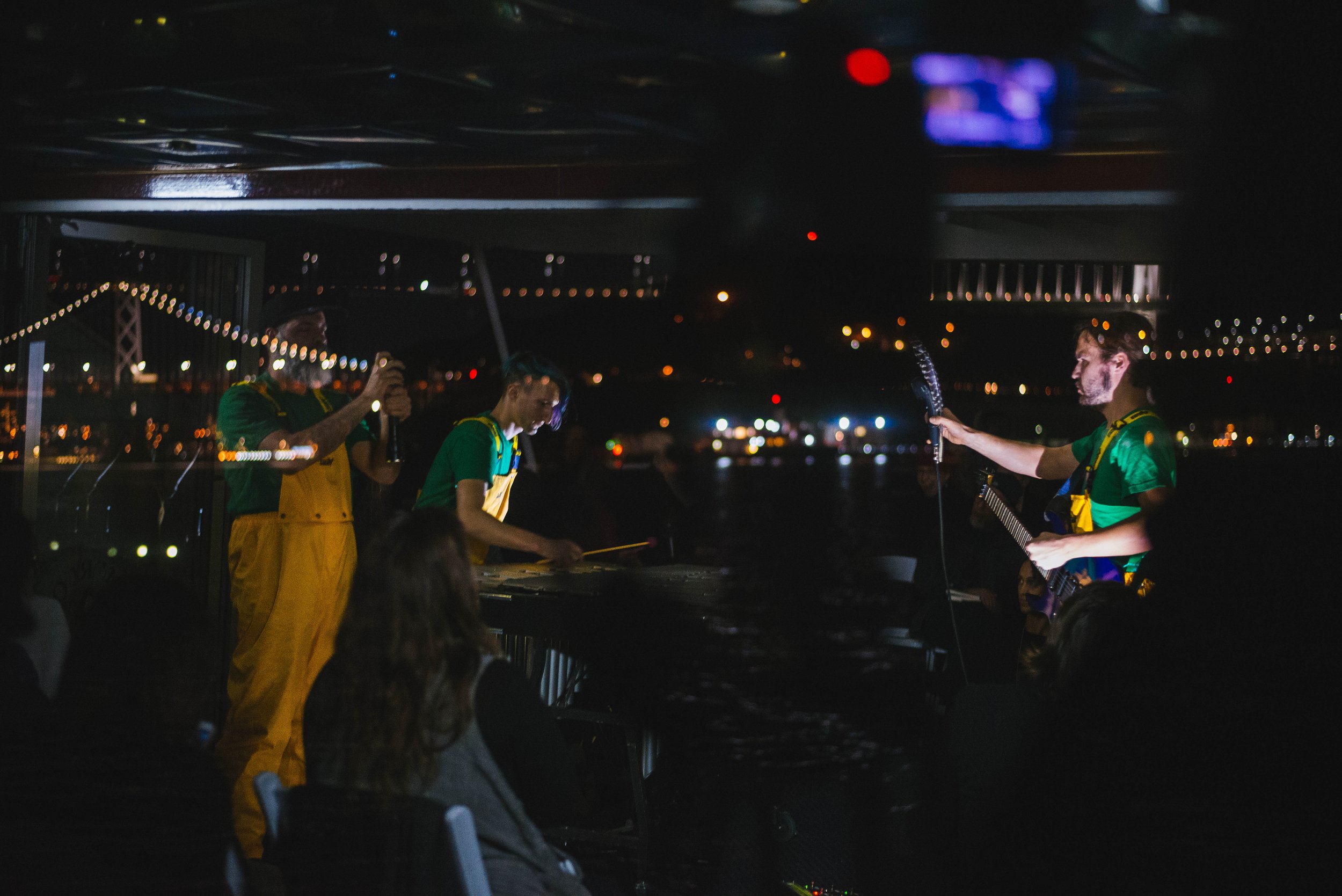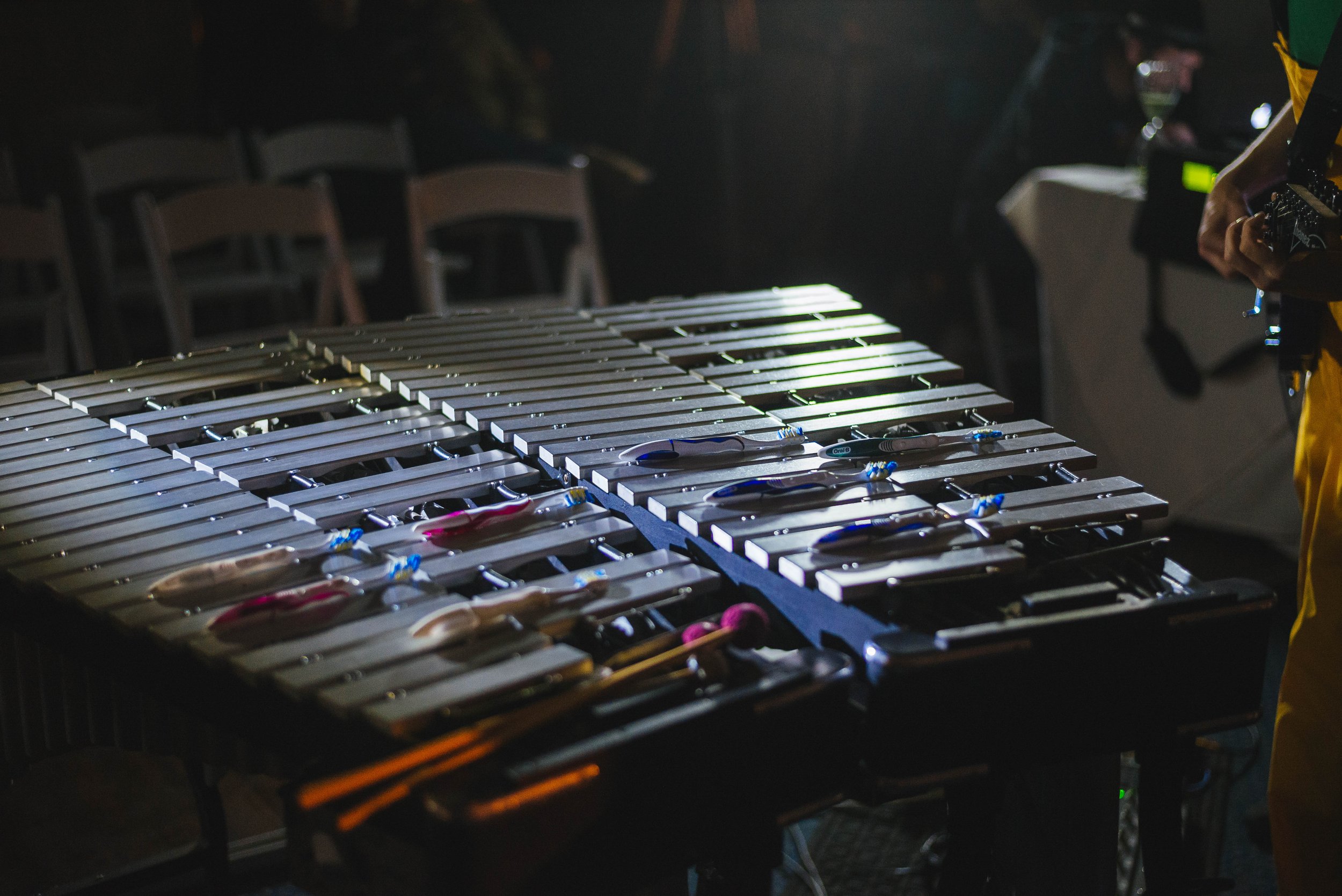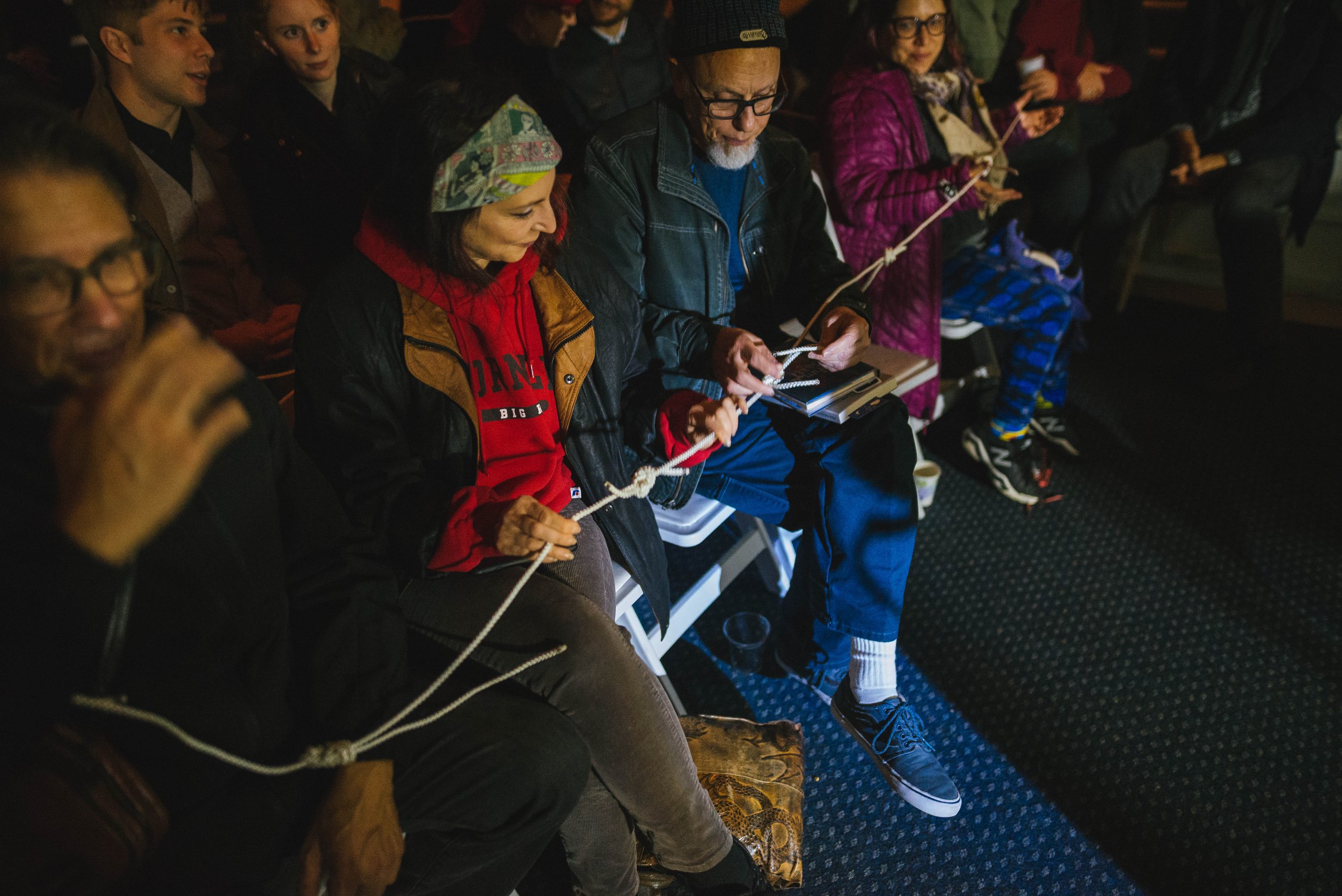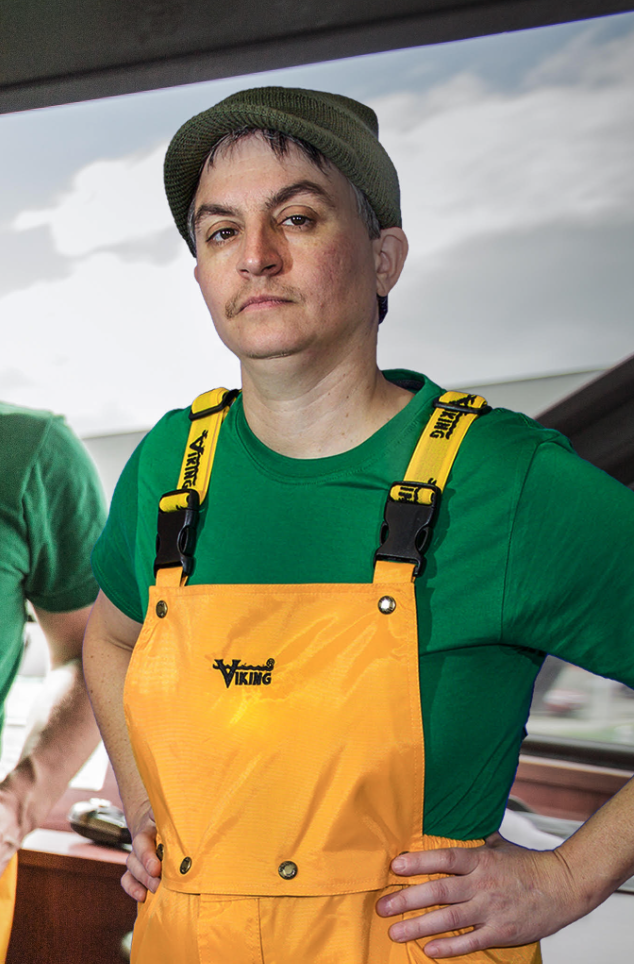
Luciano Chessa’s
Squeeze! Squeeze! Squeeze!
“So much in the piece is pleasurable… and if the audience member can surrender himself to the embrace of the proverbial whale sperm, Chessa’s riches come forth”
—San Francisco Classical Voice
Luciano Chessa’s Squeeze! Squeeze! Squeeze! is an evening-length opera/meditation on the 94th chapter of Herman Melville’s Moby Dick, perhaps the most homoerotic chapter in great American literature. Written for microtonal electric guitar and vibraphone, an amplified red Solo cup, electric toothbrushes, voice, megaphone feedback, collaborative direction and design by Terry Berlier, and a variety of audible theatrical gestures, Chessa’s composition crafts noises both immediately recognizable and profoundly otherworldly.The score dictates that the only appropriate venue in which to perform the work is at sea. As such, for each performance The Living Earth Show, Luciano Chessa, and Terry Berlier turn a boat into a floating concert venue and art installation.
The “stage” upon which the piece is performed is extended to include the entirety of the vessel. As specified in the score, a fishmonger is aboard the boat serving canned fish and coffee to the audience, a seance is held to channel the spirit of Herman Melville, and the performers and audience members participate in a staged, dadaist protest ritual as the boat sails out to sea.
Above all, the piece is one of Luciano Chessa’s masterpieces: it draws immense power in its innate fragility and intimacy.
Chessa purposefully puts obstacles in the way of getting lost in the meditations he creates: namely, the inherent silliness and absurdity required to make them. Chessa often blurs the line between musician and performance artist, requiring the musicians to do things that might seem somewhat silly and surreal to accurately perform the work. And the sounds themselves, taken in isolation and within a context of western music, can be seen as abrasive, harsh, and dissonant.
As a performer and a listener, these obstacles--and Luciano’s compositions as a whole--force one to make a conscious choice: should I dismiss something because it is absurd and different from that which is considered classically ‘beautiful,’ or do I reject my own preconceptions and do the work necessary to accept and find the beauty in what’s in front of me?
The fragility is omnipresent: one could always shut off, and use the dadaist nature of the performance as an excuse to stop paying attention. Once one makes a choice to embrace the sounds and meditate within them, though, it’s as if Luciano’s music has unlocked a completely new world: one can find moments more beautiful, intimate, gorgeous and haunting in their surroundings, and the act of exploring these new soundscapes can be as liberating as exploring exotic, alien terrain.
This piece, ultimately, was built to celebrate the communal nature of music-making and performance. The audience, the musicians, the composer, the director, and the stage will be sent out to sea, where, for a moment in time, we’ll all quite literally be in the same boat.
Squeeze! Squeeze! Squeeze is made possible by the generous support of the following partners:
The Clarence E. Heller Foundation, Russ Irwin.
Credit: Roger Jones
LUCIANO CHESSA: COMPOSER/VOCALIST
Luciano Chessa is a composer, conductor, audiovisual and performance artist, and music historian. His performance of "intensely visual scores" in a concert he curated for NYC's Roulette last December, has been named "gripping" by The New York Times' chief classical music critic Anthony Tommasini. Chessa's compositions include Cromlech, a large organ piece he premiered in Melbourne’s Town Hall in May 2018 as part of a solo organ recital that received over 2,200 ticket bookings; the opera Cena oltranzista nel castelletto al lago—a work merging experimental theater with reality TV which required from the cast over 55 hours of fasting—and A Heavenly Act, an opera commissioned by the San Francisco Museum of Modern Art, with original video by Kalup Linzy.
Chessa has been commissioned multiple times by the Performa Biennial, and in 2014 he presented three events at the Solomon R. Guggenheim Museum as part of the exhibition Italian Futurism, 1909-1944: Reconstructing the Universe.
Chessa’s work appeared more than once in Artforum, Flash Art, Art in America, and Frieze; and has been featured in the Italian issue of Marie Claire and in the September Issue of Vogue Italia.
He has been interviewed twice by the British BBC, and has been the subject of two short documentaries: one produced by RAI World (2014), and the other by Vietnamese State TV VTV1 in the occasion of his first trip to Viet Nam (2015).
Credit: Roger Jones
TERRY BERLIER: DIRECTOR/SET AND COSTUME DESIGN
Terry Berlier is an interdisciplinary artist who investigates the evolution of human interaction with queerness and ecologies. She has exhibited in solo and group shows in North America, Europe, Asia, South America, and Australia including at the Yerba Buena Center for the Arts, The Contemporary Jewish Museum in San Francisco, Contemporary Art and Spirits in Osaka, Japan, San Jose Institute of Contemporary Art, and the Stanford Art Gallery. She has received numerous residencies and grants including the Center for Cultural Innovation Grant, the Zellerbach Foundation, and the Arts Council Silicon Valley Artist Fellowship. Her work has been reviewed in the Art in America, BBC News Magazine, San Francisco Chronicle, is published in the book ‘Seeing Gertrude Stein’ by Wanda Corn and Tirza Latimer through University of California Press, and ‘Slant Step Book: The Mysterious Object and The Artworks it Inspired’ by Francesca Wilmott and Phil Weidman. Her work is in several collections including the Kala Art Institute, University of Arizona, Tucson, Bildwechsel Archive in Berlin, Germany, and Progressive Corporation. She received a Masters in Fine Arts in Studio Art from University of California, Davis and a Bachelors of Fine Arts from Miami University in Oxford, Ohio. Berlier is an Associate Professor and Director of the Sculpture Lab in the Department of Art and Art History at Stanford University. She serves as an advisory board member for Recology’s Artist-in-Residence Program in San Francisco.







All photos here: Luke Cheng


